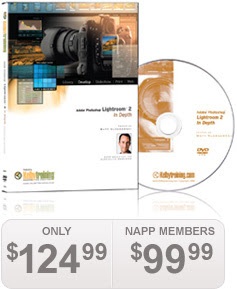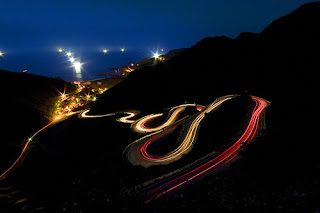The New Haven Camera Club Photo Blog address is: http://NHCCphotoblog.blogspot.com/Feedburner is a service that allows you to "subscribe" to a Blog and get updates (via email) when the Blog has been updated. For most of you I actually subscribed you to the Blog (and then you verified that you actually wanted the subscription). You can tell other people to go to the Blog and they can subscribe themselves. We had a dozen or so people subscribe to our NHCC Photo Blog after we presented at the NECCC conference in July. Feedburner sends you an email when something new is posted. If nothing new is posted you do not get an email. If multiple posts are blogged for one day you only get ONE email (in contrast to the multiple emails that you used to receive sometimes).Perhaps some people are confused because they do not know that the Blog is an actual website (they only know it by the emails that they receive). This is the real advantage of a blog over all those emails that I have been sending -- all this information is now ARCHIVED and EASILY SEARCHABLE -- try it...really...go to the actual Blog: http://NHCCphotoblog.blogspot.com/So say that you get a Blog post today -- you read it and then you archive it or delete it. Then two months later you have need of that information but don't remember where you saved it or that you deleted it. Go to the Blog -- and they are all there -- searchable and categorized (click on workshops and see everything blogged about workshops), search for photoshop and see everything blogged about photoshop, etc.The NHCC Photo Blog is different than our own personal Blog (I also create Blogs for clients).Our own personal Blog is http://TLCphoto.blogspot.com/ --
This is where Tom and I post our own photos, both our own personal photos and the ones that we take for clients. You can subscribe to our Blog if you like (we do not post as often, only 1-3 times a week) but our photos are pretty good (shameless plug) ;-)
So...what is a Blog ???Blog = Web Log
A weblog is a hierarchy of text, images, media objects and data, arranged chronologically, that can be viewed in an HTML browser.
From “Web log.” A blog is basically a journal that is available on the web. The activity of updating a blog is “blogging” and someone who keeps a blog is a “blogger.”‘
To put it as simply as possible - a blog is a type of website that is usually arranged in chronological order from the most recent ‘post’ (or entry) at the top of the main page to the older entries towards the bottom.
A blog is a personal diary. A daily pulpit. A collaborative space. A political soapbox. A breaking-news outlet. A collection of links. Your own private thoughts. Memos to the world.
Your blog is whatever you want it to be. There are millions of them, in all shapes and sizes, and there are no real rules.
In simple terms, a blog is a web site, where you write stuff on an ongoing basis. New stuff shows up at the top, so your visitors can read what's new. Then they comment on it or link to it or email you. Or not.
Since Blogger was launched in 1999, blogs have reshaped the web, impacted politics, shaken up journalism, and enabled millions of people to have a voice and connect with others.
And it is just getting started.
In 1998 there were just a handful of sites of the type that are now identified as weblogs (so named by
Jorn Barger in December 1997). Jesse James Garrett, editor of
Infosift, began compiling a list of "other sites like his" as he found them in his travels around the web. In November of that year, he sent that list to Cameron Barrett. Cameron published the list on
Camworld, and others maintaining similar sites began sending their URLs to him for inclusion on the list. Jesse's '
page of only weblogs' lists the 23 known to be in existence at the beginning of 1999.
Suddenly a community sprang up. It was easy to read all of the weblogs on Cameron's list, and most interested people did.
Peter Merholz announced in early 1999 that he was
going to pronounce it 'wee-blog' and inevitably this was shortened to 'blog' with the weblog editor referred to as a 'blogger.'
Blogs are usually (but not always) written by one person and are updated pretty regularly. Blogs are often (but not always) written on a particular topic - there are blogs on virtually any topic you can think of. From
photography, to spirituality, to recipes, to personal diaries to hobbies - blogging has as many applications and varieties as you can imagine. Whole blog communities have sprung up around some of these topics putting people into contact with each other in relationships where they can learn, share ideas, make friends with and even do business with people with similar interests from around the world.
Blogs usually have a few features that are useful to know about if you want to get the most out of them as a reader. Lets examine a couple briefly.
Archives - You might look at the front page of a blog and think that there is not much to them. A few recent entries, some links to other sites and not much else. However its worth knowing that there is a lot more going on under the surface that might initially meet the eye. For example in addition to the main page of this blog there are other pages, some of the posts below the surface that I’ve written over the past few months.
When I write a post like this one it goes to the top of the front page. As it gets older and as I add more current posts it begins its journey down the page until it disappears from it.
This is not the end of its life however, because it goes into the ‘Archives’ of my blog. It sounds like a dusty dark place but its really just like a filing cabinet that is easily accessible in a couple of ways. You can read my ‘archives’ simply by looking on the ’sidebar’ (over on the side of this blog) at the ‘archives’ or ‘labels' section. There you will see links to all my old posts which you can access either by category. You’ll see a category for ‘photoshop’ - click that link and you’ll see all my old posts on that topic with the most recent at the top and the oldest at the bottom.
Comments - Not all blogs use comments - but most do. This blog is not a monologue but a conversation. You can give me feedback on almost everything I write simply by clicking the ‘comments’ link at the bottom of each one of the posts. This will take you to a little form where you leave your name (and a link to your own blog if you have one) as well as your feedback, comment, critique, question, essay on why you love my blog, promise me money…. etc).
Are you still confused? Would you like more information? Below are a few helpful articles on the topic - there are many more on the web - just do a search on your favourite search engine.
Rebecca Blood has written a helpful
history of blogging for those who are interested in learning more about the blogging evolution over the past few years.
Harvard Law has a helpful article titled
What makes a Weblog a WeblogTrudy Schuett writes a good article title
What is a blog and why do we need one?WordPress: Introduction to Blogging

























